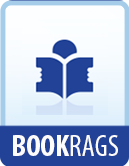Here, if anywhere, we get Giorgione’s great interpretative qualities, his penetration into human nature, his reading of character. It is an astonishing thing for one so young to have done, explicable psychologically on the existence of a lively sympathy between the great lady and the poet-painter. Had we other portraits of the fair sex by Giorgione, I venture to think we should find in them his reading of the human soul even more plainly evidenced than in the male portraits we actually possess.[140] For it is clear that the artist was “impressionable,” and he would have given us more sympathetic interpretations of the fair sex than those which Titian has left us. The so-called “Portrait of the Physician Parma” (at Vienna) is another instance of Giorgione’s grasp of character, the virility and suppressed energy being admirably seized, the conception approaching more nearly to Titian’s in its essential dignity than is usually the case with Giorgione’s portraits. It is a matter of more regret, therefore, that the likenesses of the Doges Agostino Barberigo and Leonardo Loredano are missing, for in them we might have had specimens of work comparable to the Caterina Cornaro, which, in my opinion at all events, is Giorgione’s masterpiece of portraiture.
I have given reasons elsewhere for dating this portrait at latest 1500. It is probably anterior by a few years to the close of the century. This deduction, if correct, has far-reaching consequences: it becomes actually the first modern portrait ever painted, for it is the earliest instance of a portrait instinct with the newer life of the Renaissance. And this brings us to the question: What was Giorgione’s relation to that great awakening of the human spirit which we call the Renaissance? Mr. Berenson answers the question thus: “His pictures are the perfect reflex of the Renaissance at its height."[141] If this be taken to mean that Giorgione anticipated the aspirations and ideals of the riper Renaissance, I think we may acquiesce in the phrase; but that the onward movement of this great revival coincided only with the artist’s years, and culminated at his death, is not historically correct. The wave had not reached its highest point by the year 1510, and Titian was yet to rise to a fuller and grander expression of the human soul. But Giorgione may rightly be called the Herald of the Renaissance, not only by virtue of the position he holds in Venetian painting, but by priority of appearance on the wider horizon of Italian Art.
Let us take the four great representative exponents of Italian Art at its best, Raphael, Correggio, Leonardo, and Michel Angelo. Chronologically, Giorgione precedes Raphael and Correggio, though Leonardo and Michel Angelo were born before him.[142] But had either of the latter proclaimed a new order of things as early as 1495? Michel Angelo was just twenty years old, and he had not yet carved his “Pieta” for S. Peter’s. Leonardo, a man of forty-three,




